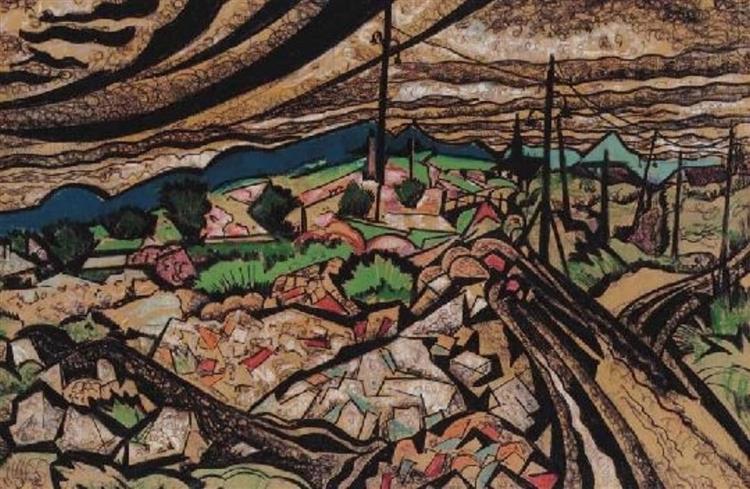Description
"Vihar a Város Szélén" by Hugó Scheiber is a work that captures the essence of a storm on the border of the city with an evocative force and a masterful technique. Created by an artist whose work is deeply rooted in European modernism, this painting reflects not only Scheiber's genius, but also its ability to articulate social and natural tensions through art.
Scheiber, born in 1873, was a Hungarian painter known for his contributions to the futuristic and expressionist movement. His career was marked by an interest in the representation of dynamism, movement and intense human emotions, characteristics that can be seen vividly in this particular piece. Scheiber found inspiration both in its urban and nightlife environment of European cities, bringing a fresh and vibrant perspective to their works.
"Vihar to Város Szélén" (storm on the edge of the city) is an electrical representation of a city under the onslaught of a storm. Using angular forms and lines, Scheiber creates a sense of movement and chaos that is almost palpable. Buildings in the composition seem to twist and be swept by winds, symbolizing not only the violence of the storm but also perhaps a broader comment on the fragility of urban life against the forces of nature.
The color plays a crucial role in the work. Scheiber uses a palette dominated by dark and cold tones, such as navy blue and gray, which contrast with yellow and white touches. This choice of colors not only evokes the gloomy and stormy atmosphere, but also adds an emotional depth to the work. The brightest tones can be interpreted as flashes of light reflected by buildings or lightning cutting the sky, which further amplifies the intensity of the scene.
Human characters in painting are scarce, but their presence is significant. Represented as simplified and almost geometric silhouettes, they seem lost and small compared to the immensity of the elements around them. This scale highlights human vulnerability to nature and at the same time hints at the characteristic alienation and helpless of modern life, one of the recurring themes in Scheiber's work.
The artistic composition of the work is remarkably dynamic. Scheiber uses prominent diagonal lines, which not only suggests the movement of the wind and the strength of the storm, but also guides the viewer's view through the work, creating a sense of participation in the scene. The almost tangible vibration of the lines and shapes also reflects the influence of futurism, emphasizing speed and movement.
In the context of his time, "Vihar Város Szélén" can also be seen as an answer to the rapid social and technological changes of the early twentieth century. The image of a city facing a storm can be interpreted as a metaphor of the struggle between modernity and nature, a theme that deeply resonated in the period of scorching when Scheiber was active.
In summary, "Vihar Város Szélén" is a masterpiece that encapsulates tension, emotion and vulnerability of urban life against the relentless natural forces. Through its master use of color, shape and composition, Hugó Scheiber offers us not only a dazzling view of a storm, but also a deep meditation on the human condition in the modern era. This painting is a testimony of Scheiber's talent and his ability to transform a daily scene into a poetic and critical exploration of his time.
KUADROS ©, a famous paint on your wall.
Hand-made oil painting reproductions, with the quality of professional artists and the distinctive seal of KUADROS ©.
Art reproduction service with satisfaction guarantee. If you are not completely satisfied with the replica of your painting, we refund your money 100%.

